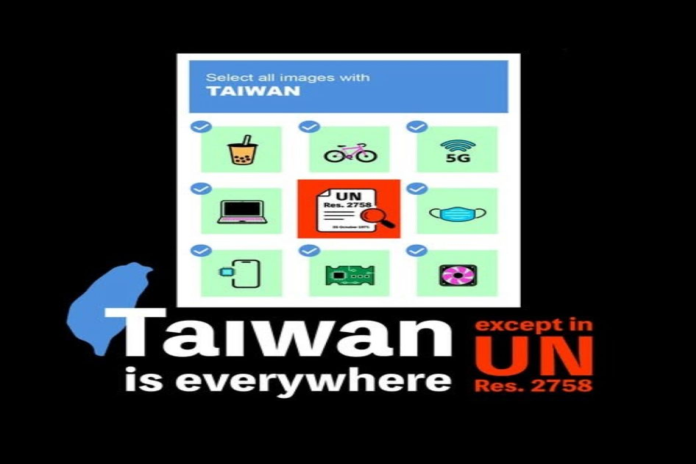Speaker: Graeme Reynolds, Director of Competition
Event: PIFMA’s Wealth Vulnerability event
Delivered: 24 October 2024
Highlights
- We are aiming to unlock greater competition and innovation.
- We want firms to take time to understand what vulnerability means for their business, and for their client base.
- Firms need to understand what procedures need to be implemented to support the delivery of good outcomes for those different aspects of vulnerability.
By Graeme Reynolds
I am delighted that this event has been widened out to the whole wealth management sector, not just the PIMFA membership, and to see so many of you here and online today. That is hugely encouraging given the firms you represent support millions of clients in achieving their financial goals and manage almost a trillion pounds in assets on their behalf. But, as we know, there is a substantial financial support gap in the UK – 4.5 million UK consumers with investible assets of £10,000 or more held mostly or entirely in cash.
Thirteen million people, as Barclays reports, with £430 billion that could be made to work harder. The cost to growth, national and personal, is significant. It’s why we’re undertaking with the Treasury a review of the financial advice/guidance boundary. We are aiming to unlock greater competition and innovation.
As we recently set out in our supervisory strategy for the financial advice sector, ‘it’s good to be different’. To look together at new and different ways of reducing the advice gap. Greater opportunities to compete to find new ways to deliver financial advice. And all pointing towards getting more people the financial help they need, in easy to access ways, at prices they can afford. And with that, the potential to untap those savings that can be put to more productive use and help the economy grow as well.
Trust and recognising vulnerability
But to achieve all that we need better levels of trust. A trusted wealth and advice industry is vital in helping people feel empowered and confident to make the most of their savings and investments and achieve good outcomes.
Central to that is knowing that you won’t be taken advantage of and will be properly supported if you are, or become, vulnerable.
That word – vulnerability – in the mouths of regulators like me can become something technical, and risks becoming another box to tick. What we’re talking about is people – you, me, our family and friends – your clients – their circumstances and life experiences.
It’s about the events that can happen to us all – ill health, bereavement, job loss. About resilience to unexpected financial or emotional shocks, and capability and capacity to make good decisions about money management, including in times of personal stress or difficulties.
It’s about financial firms being able to proactively recognise those characteristics and take action to address the increased risk of financial harm they might entail.
Delivering a fair result for those who – for one reason or another – might find navigating their finances more challenging.
In 2022, according to our Financial Lives survey, nearly a third of UK adults with £50,000 or more of investible assets – wealth management clients among them – had at least 1 characteristic of vulnerability.
Delivering for those clients is therefore a business necessity, crucial to a good client service – as well as being a regulatory expectation enshrined in the Consumer Duty.
With so many of you joining this event today it shows what we already know. There are many in this industry who get it, focused as you are on delivering for your clients.
‘Getting it’ means embracing the vulnerability guidance and the Duty, using them to challenge how they work, their culture, and to improve outcomes.
In the firms that get this right, the first, vital, step is identifying vulnerability. You can’t begin to think about how to deal with vulnerability, how to meet your clients’ needs, if you haven’t first considered which of your clients might be vulnerable and why. But the firms who get it right then go on.
They take a second step. They understand how their clients’ vulnerability characteristics will impact their needs as they interface with their services.
And they take a third step. They provide support and adaptations to make those services work for their diverse clients’ needs. They take a second step. They understand how their clients’ vulnerability characteristics will impact their needs as they interface with their services.nd they step forward again and again. They monitor their clients to recognise how those characteristics and needs change over time.
They monitor the outcomes for those clients to continually improve their service. To ensure it meets the changing needs of clients in vulnerable circumstances. And they evaluate their progress in supporting them. They check to see whether the improvements they make are beneficial and well-targeted. You will each know how far along those steps you’ve managed to go. Maybe you’ve been focusing on identifying vulnerability and are ready to now take the next steps. Maybe you are already well along to monitoring and evaluating your approach to vulnerability.
But for those of you yet to really embrace step 1, I would ask you: if you don’t know which clients have additional or different needs, how can you ensure good financial outcomes for them? And if that is the case, how can you be meeting the bar set by the Consumer Duty?
Wealth management: An outlier
This is a really important challenge for the wealth sector because in terms of identifying clients with characteristics of vulnerability, our data suggests a significant difference in much of the wealth sector compared to what we would expect from our Financial Lives survey findings.
Portfolio managers identified just 5 percent of their clients having characteristics of vulnerability in our 2023 wealth survey. Though that has doubled since the previous time our wealth survey was undertaken in 2022.
The comparable statistic for stockbrokers rose by 25 percent year on year, but it still remains less than 1%. Of course, there is no set quantitative goal here. Nor should there be. But it surprised us that a quarter of portfolio managers and half of our stockbroking firms report they still have no vulnerable clients at all. This sits in contrast to the Financial Lives data I mentioned earlier. And, put together, the data shows the wealth sector remains a clear outlier.
And given those aspects of vulnerability I talked about earlier, is there any reason why the wealth sector should be this much different to every other sector? Why wouldn’t bereavement and ill health, for example, be a relevant factor for a material proportion of clients?
Understanding appears to be an issue for some firms. Nick Hulme, the wealth team’s head of department, invited a portfolio management firm to this event. Typically polite, they thanked him for the invitation but excused themselves. They said they didn’t deal with end clients. They said vulnerability didn’t apply to them.
But to be clear, the Duty applies proportionately. Firms more remote from retail clients may have more limited obligations. But the design and value proposition for a product or service, and the information provided to ensure it is understood, can have a real impact on clients with characteristics of vulnerability. If you are part of the distribution chain, you need to act.
Our supervisory work
Our 2023 wealth survey led to significant supervisory work to understand the results. We’re testing firms’ understanding of those key aspects of the consumer duty:
- Client needs, and monitoring;
- Training, skills and capability of staff;
- Product and service design;
- Communications and client service.
And to assess whether these support good outcomes for clients in vulnerable circumstances. We have seen some really positive initiatives in our supervisory and wider policy review work.
For example, in identification of vulnerability. We’ve seen some firms adopt a ’tell us once’ approach to minimise the number of times a customer must inform them about their vulnerability such as in the case of a bereavement.
We’ve seen other firms developing systems or working with customer relationship management providers to record a wider range of vulnerability characteristics. In one firm we recently visited this was well demonstrated by their system having detailed drop-down vulnerability characteristic options that could be selected, which client support could then be matched to.
And in understanding client needs and support, we’ve seen examples of firms providing tailored support. We’ve seen some firms engaging with their vulnerable client base to understand individual needs better.
Identifying vulnerability in practice
We’ve also seen an investment management company who sat down with a client who could not read or write and, over several weeks, explained their options, breaking these down into small decisions where the client could indicate their preference. This gave them valuable insight that not only benefitted the client but could be used more fully across their client base if necessary.
But we’ve also had concerns. We’ve seen firms who have failed to think about vulnerability proactively. For example, one wealth management firm considered the independent financial advisers it was contracted with its only clients. The firm could not articulate who was in their target market. It could not identify any characteristics of the needs of its end clients. And therefore, it had not considered any action to meet those needs.
We also had to act when we found a wealth firm’s policy prohibiting the onboarding of clients with a range of age, financial capacity and health vulnerabilities. We were concerned that the policy itself may not have been appropriate.
In the event, it wasn’t being complied with. A fifth of the firm’s clients were aged over 80 and 42 percent held under £30,000. Many of these clients, sitting outside the firm’s target market, were paying high fees that did not seem aligned with fair value. In some cases these fees were as much as 65 percent of their portfolio for one year (2023).
As well as concern about whether fair value was being provided, terms of service weren’t communicated in ways easy to understand. There is also evidence that some firms aren’t perhaps giving themselves the credit due or the information that would help us assess how they’re doing.
One firm indicated none of its clients had vulnerabilities. We visited and it became clear the firm had provided tailored support to several direct clients with accessibility needs, ensuring that information was provided in a medium they could easily understand. This was great to see. For any of you doing something similar – this can be easily rectified by recognising that a client does not stop being vulnerable when a mitigation is put in place. Some of this comes down to understanding.
We want firms to take time to understand what vulnerability means for their business. And for their client base. Understand that a standardised approach of having one group of clients who are labelled vulnerable and then another group of ‘not vulnerable’ clients does not account for the wide range of characteristics of vulnerability.
Understand that you are highly likely to have some clients with vulnerable characteristics, and that you need to consider which clients are vulnerable and what it is that makes the client vulnerable.
Understand what procedures need to be implemented to support the delivery of good outcomes for those different aspects of vulnerability.
Understand that current system restrictions are not a justifiable reason not to start to make changes. Improved systems can be introduced in a timely and manageable way, while effort is made to implement effective workarounds until this is completed.
Understand the need to monitor and evaluate how effectively your approach is working in practice – using data to test if outcomes are being achieved and determining appropriate metrics to provide a baseline to track against and adjust.
What we want you to do
One criticism of regulators is we’re long on diagnosis and short on prescription. We recognise that is a particular challenge when what we’re looking for is the outcome for those clients you serve – the end result.
That might seem nebulous when set against the compliance comfort blanket of granular rules and guidance. So, what is it we want you to do?
Identification
We want you to put processes in place to recognise those who may need more help, or to identify those engaging with your services where they may not meet their needs. This applies to all firms – with or without direct client engagement.
Support and understanding
We want you to consider why people are using your products and services, what their goals are, and how the client journey you provide – from promotion to ongoing client service – supports them to be realised.
Issue clear, easily understood communications and promotions so people can make informed decisions, tailoring them where necessary.
Evolve well trained, empathetic client service that appreciates vulnerabilities aren’t fixed, that circumstances change and that you might need to adapt, too, as a result.
Monitoring and evaluation
We want you to think pragmatically and proportionately about what a ‘good’ client outcome is for those using your service.
Use data to test yourselves on whether your clients are, in fact, those you expected to have, and receiving the service they and you intended. And with all of that, we want you to be open with us. Come to us when you’re not sure, or think you have an issue.
Digest the work we’ve published, and will publish, on how the Consumer Duty and vulnerability guidance is being implemented elsewhere, considering what lessons there might be for you.
Conclusion
I’ve spent time today really focusing on why serving clients with vulnerability well really matters. But to conclude, I want to remind you of how this fits with our new growth mandate.
We want the economy to flourish. We want to see people’s money, scrupulously saved, deliver the financial wellbeing they deserve. Put to productive use.
We are partners in delivering that need to be different and do things differently. You play a crucial role in securing your clients’, and their families’, financial futures. Trust is central to that.
And that’s built not just when the times are good, but when the chips are down – when we’re vulnerable.





